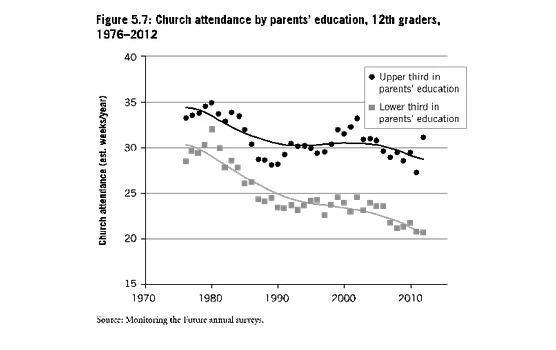Highlights
America’s churches are in trouble, and they are in trouble in communities that arguably need them the most.
One of the tragic tales told by Harvard scholar Robert Putnam in his important new book, “Our Kids: The American Dream in Crisis,” is that America’s churches have grown weakest in some of the communities that need them most: poor and working-class communities across the country. The way he puts it, our nation’s churches, synagogues and mosques give children a sense of meaning, belonging and purpose—in a word, hope—that allows them to steer clear of trouble, from drugs to delinquency, and towards a bright and better future, warmer family relationships, significantly higher odds of attending college.
The tragedy is that even though religious involvement “makes a bigger difference in the lives of poor kids than rich kids,” Putnam writes, involvement is dropping off fastest among children from the least privileged background, as the figure below indicates.

The picture of religion painted by Putnam, a political scientist and the foremost scholar of American civic life, is part of a broader canvas in his book showing that kid-friendly institutions — not just churches, but also strong families and strong schools — are withering, but almost entirely in less-affluent communities. American children from better-educated and more affluent homes enjoy decent access to churches, families and schools, which lifts their odds of realizing the American Dream, even as kids from less-privileged homes are increasingly disconnected from these key institutions, making the American Dream that much more difficult for them to pursue.















